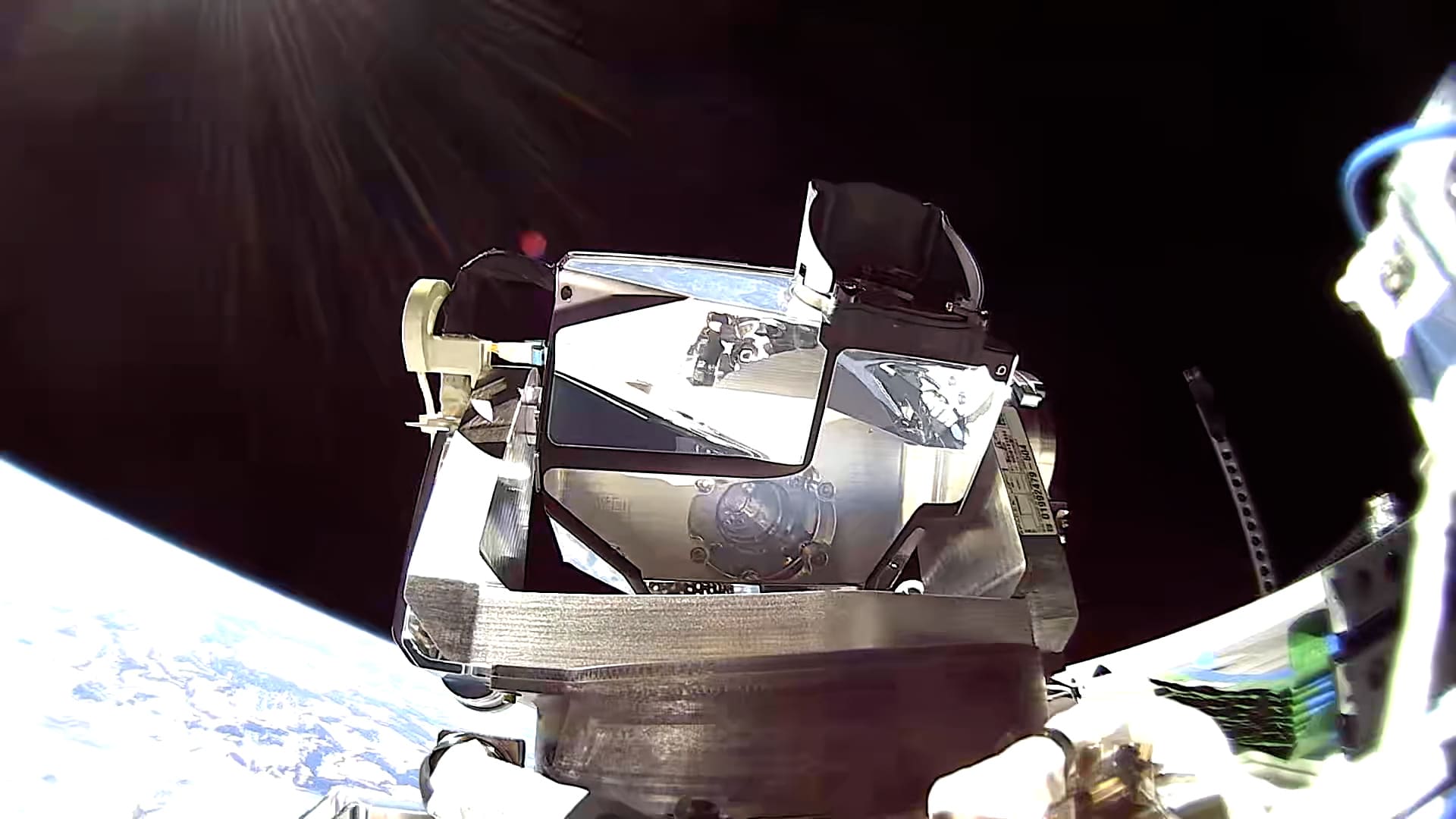Muon Space will integrate Starlink’s mini laser terminals into its satellite platform Halo™, transforming its satellites into real-time network nodes within SpaceX’s global optical mesh. The promise: up to 25 Gb/s optical links over distances of up to 4,000 km, millisecond latency to terrestrial PoPs, and persistent connectivity for real-time tasks, continuous payload operation, and high-bandwidth data streaming anywhere on the planet.
“With persistent optical broadband, Halo ceases to be isolated vehicles and becomes active nodes in Starlink’s global network,” notes Pascal Stang, CTO of Muon Space. “That transforms mission design and accelerates information flow to decision-makers on the ground.”
What Changes (And Why It Matters)
- From contact windows to continuous presence. The traditional ground station model offers brief windows to download data and send commands. With Starlink’s laser mesh, Muon’s Halo routes traffic in orbit to terrestrial PoPs, avoiding delays and reducing latency to milliseconds.
- 25 Gb/s sustained per terminal. Each mini laser supports 25 Gb/s bidirectional (↓↑) over LEO–LEO distances of up to 4,000 km; at shorter ranges, the effective rate can be higher.
- Satellites as data center extensions. With persistent optical backhaul, Halo can continuously transmit to the cloud while performing edge processing (data fusion, AI inference, product generation, closed-loop tasking).
- High availability. A single terminal provides very brief interruptions during relay handovers. With multi-terminal configurations, make-before-break handovers enable >99% uptime typical in LEO.
- Security by design. User traffic travels through encrypted and mutually authenticated tunnels, with hardware-anchored keys and the option for client-controlled end-to-end encryption.
Use Case: Near Real-Time Wildfire Monitoring
The FireSat constellation of Earth Fire Alliance (fire detection and monitoring) will directly benefit from:
- From ~20 minutes to near real-time. Using Starlink optical links, the average data delivery delay drops dramatically, enabling immediate alerts for new ignitions and continuous perimeter and community updates.
- Early mobilization. Incident command and response teams can act sooner, increasing the likelihood of extinguishing small fires early.
Under the Hood: Halo + Starlink Mini Lasers
- Halo: Muon’s vertically stacked technology based on the MuSat XL (~500 kg) platform with high-precision pointing, large payload capacity, and a software-defined orchestration layer to integrate, manage, and direct payloads and communications.
- Starlink Mini Lasers: compact LEO–LEO terminals that inject into Halo’s orbital optical mesh and route traffic towards terrestrial PoPs.
- Built-in availability: single or multiple terminals maintain sessions with rapid handovers between relays; multi-terminal setups enable make-before-break handovers, increasing continuity to over 99% uptime in typical LEO conditions.
Timeline and Deployment
- Ongoing integration into customer constellations.
- First Halo with Starlink: expected launch in Q1 2027.
Industry Outlook: From “Passes” to “Presence”
The integration signals a fundamental shift in LEO: moving from pass-based architectures (brief contacts, intermittent services) to native network platforms, always connected, with latencies comparable to the internet. For applications like Earth observation, climate analysis, or national security missions, this means:
- Compressed decision cycles (sense → decide → act).
- Streamlined global operations without deploying stations in every region.
- New business models: constellations that operate with the speed and responsiveness of cloud and terrestrial telecoms.
What’s Next: Questions and Metrics to Watch
- Scalable throughput: what daily volumes per satellite can a 25 Gb/s backhaul support, and how do they fit in cloud egress economics?
- Edge-to-cloud workloads: real deployments of AI/ML in orbit and closed-loop tasking (cue → collect → process → deliver).
- Multi-link reliability: empirical uptime of make-before-break handovers in diverse orbital geometries.
- Security: adoption of client keys and E2E encryption in sensitive missions.
FAQ
What exactly is a Starlink “mini laser”?
A compact inter-satellite optical terminal (ISL) that links satellites using laser. It provides 25 Gb/s per link (↓↑) over distances of up to 4,000 km and routes traffic toward Starlink’s terrestrial presence points.
How does it improve upon traditional ground stations?
It eliminates dependence on pass windows, reduces latency to milliseconds, and allows continuous operation (tasks, command & control, data streaming) anywhere.
Is millisecond latency from orbit realistic?
Yes, because traffic travels optically LEO–LEO to a nearby satellite with a ground bridge, then from there to a PoP. The physical distances and optical medium shorten latency compared to RF chains and pass waits.
What happens if a link drops?
Using a single terminal involves very short hops during handovers. Multi-terminal configurations enable make-before-break transitions, elevating availability to over 99% in typical LEO scenarios.
How is traffic secured?
Through encrypted and mutually authenticated tunnels within the Starlink network, hardware-anchored keys, and the option for client-managed end-to-end encryption on top of that tunnel.
When will we see a Starlink-equipped Halo in flight?
Muon anticipates its first launch with integrated mini lasers in the first quarter of 2027.
What does this mean for FireSat and similar missions?
Latencies dropping from minutes to seconds, near-immediate alerts, and continuous field updates enable resource mobilization early and tactical adjustments with better intelligence.
Connected to Starlink’s optical mesh, Halo satellites cease “waiting turns” to become orbiting internet nodes. The anticipated result: cloud-like insights moving at cloud speeds, more agile operations, and new services where space operates in near real-time just like on Earth.

